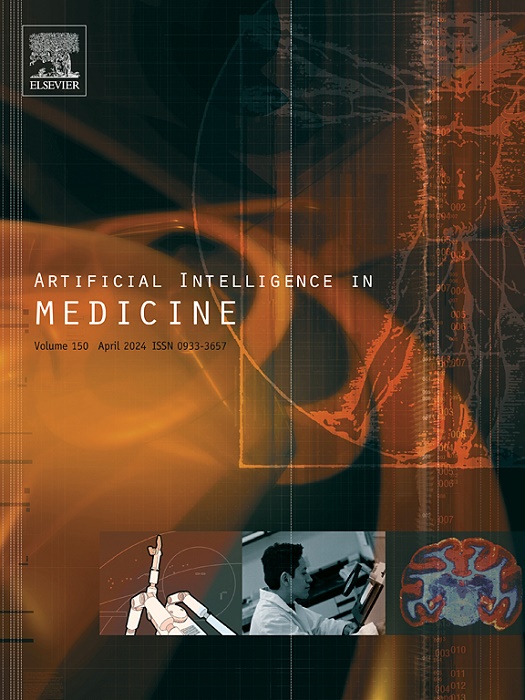VAE-GANMDA: A microbe-drug association prediction model integrating variational autoencoders and generative adversarial networks
IF 6.2
2区 医学
Q1 COMPUTER SCIENCE, ARTIFICIAL INTELLIGENCE
引用次数: 0
Abstract
Traditional biological experimental methods typically require weeks or even months of experimentation, and the cost of each experiment can reach hundreds or even thousands of dollars, which is quite expensive and time-consuming. To address this, a model called VAE-GANMDA, which integrates variational autoencoders (VAE) and generative adversarial networks (GAN) for predicting microbe-drug associations, has been proposed. Firstly, a heterogeneous network of microbes and drugs is established to enrich the association information. Secondly, by fusing VAE and GAN, the model learns the manifold distribution of data through association features, obtaining nonlinear manifold features. Furthermore, the VAE generation module is improved by integrating the Convolutional Block Attention Module (CBAM) and Gaussian kernel function, enhancing the smooth perception of manifold features, thus endowing VAE with stronger feature extraction capabilities. Then, singular value decomposition (SVD) technique is employed to extract linear features of the data. Finally, by combining linear and nonlinear features, the k-means++ algorithm is used to select balanced and high-quality negative samples for training the MLP classifier. Through performance evaluation, the area under the receiver operating characteristic curve (AUROC) and the area under the precision-recall curve (AUPRC) of VAE-GANMDA reach 0.9724 and 0.9635 respectively, outperforming classical machine learning methods and the majority of deep learning methods. Case studies demonstrate that VAE-GANMDA accurately predicts candidate drugs related to SARS-CoV-2 and candidate microbes related to ciprofloxacin.
VAE-GANMDA:一个集成变分自编码器和生成对抗网络的微生物-药物关联预测模型
传统的生物实验方法通常需要数周甚至数月的实验时间,每次实验的成本可达数百甚至数千美元,既昂贵又耗时。为了解决这个问题,提出了一个名为VAE- ganmda的模型,该模型集成了变分自编码器(VAE)和生成对抗网络(GAN),用于预测微生物与药物的关联。首先,建立微生物与药物的异构网络,丰富关联信息;其次,通过融合VAE和GAN,通过关联特征学习数据的流形分布,得到非线性流形特征;此外,通过集成卷积块注意模块(CBAM)和高斯核函数对VAE生成模块进行改进,增强了对流形特征的平滑感知,从而使VAE具有更强的特征提取能力。然后,利用奇异值分解(SVD)技术提取数据的线性特征;最后,结合线性和非线性特征,使用k-means++算法选择平衡且高质量的负样本进行MLP分类器的训练。通过性能评价,vae - gandda的接收者工作特征曲线下面积(AUROC)和精确查全率曲线下面积(AUPRC)分别达到0.9724和0.9635,优于经典机器学习方法和大多数深度学习方法。案例研究表明,VAE-GANMDA能够准确预测与SARS-CoV-2相关的候选药物和与环丙沙星相关的候选微生物。
本文章由计算机程序翻译,如有差异,请以英文原文为准。
求助全文
约1分钟内获得全文
求助全文
来源期刊

Artificial Intelligence in Medicine
工程技术-工程:生物医学
CiteScore
15.00
自引率
2.70%
发文量
143
审稿时长
6.3 months
期刊介绍:
Artificial Intelligence in Medicine publishes original articles from a wide variety of interdisciplinary perspectives concerning the theory and practice of artificial intelligence (AI) in medicine, medically-oriented human biology, and health care.
Artificial intelligence in medicine may be characterized as the scientific discipline pertaining to research studies, projects, and applications that aim at supporting decision-based medical tasks through knowledge- and/or data-intensive computer-based solutions that ultimately support and improve the performance of a human care provider.
 求助内容:
求助内容: 应助结果提醒方式:
应助结果提醒方式:


